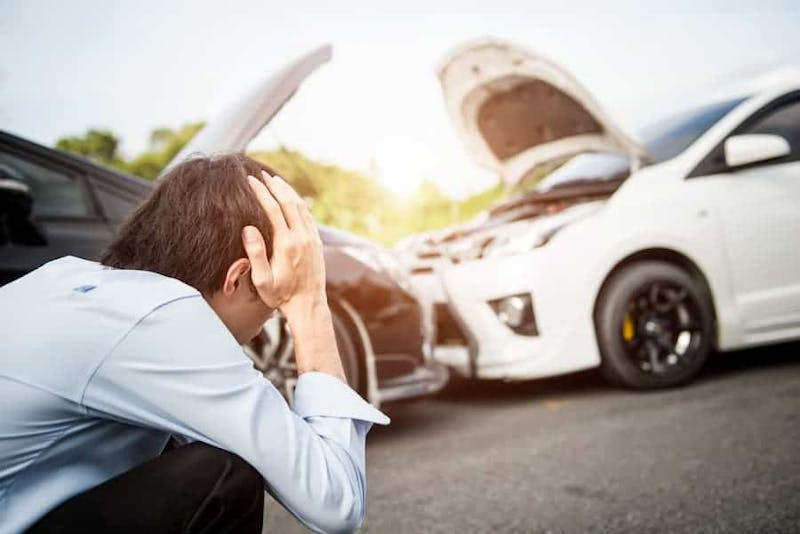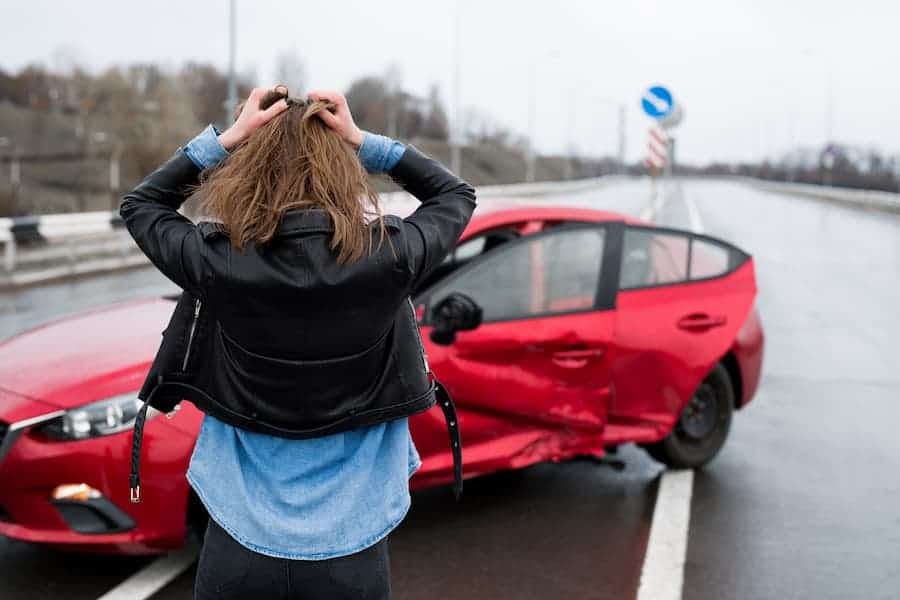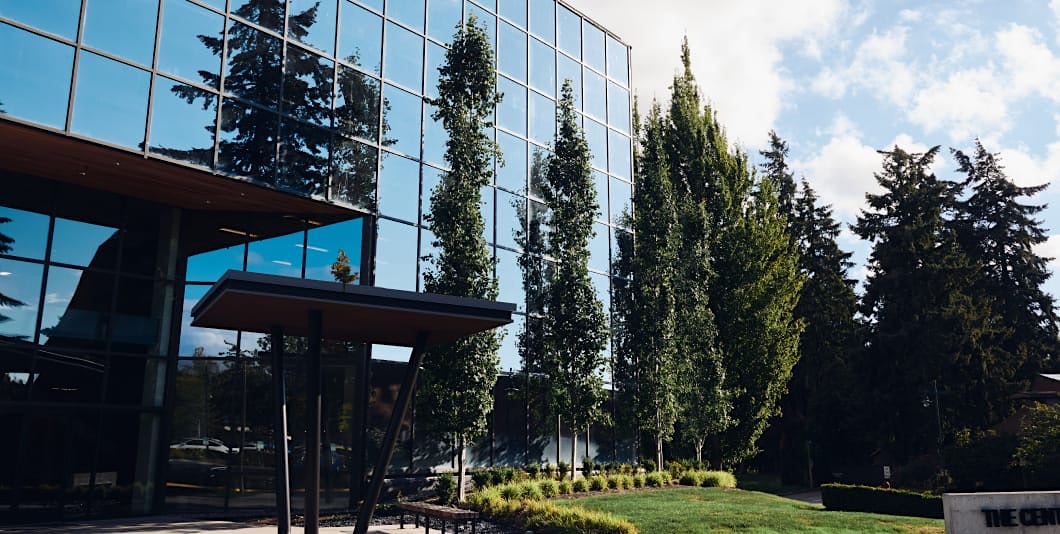
If you get hurt in a car accident or regularly drive on public roads, you should know the different types of car accidents that can occur. Learning about common accident types can help you understand the specifics of a given accident and your legal options if you ever need to file a car accident injury claim.
This blog post explores the different types and categories of car accidents. With this deep dive into each accident type’s unique characteristics, you’ll gain a better understanding of how these accidents occur, who is at fault in different crash scenarios, and the consequences that commonly affect accident victims. Reach out to a car accident lawyer.
by Point of Impact

When a car accident occurs, the point of impact refers to the spot on each vehicle where it collides with the other vehicle.
Common types of car accidents by point of impact include:
- Rear end car accidents. A rear end car accident occurs when the front end of one vehicle, the following vehicle, strikes the rear end of the vehicle in front of it, the leading vehicle. Rear end collisions are consistently one of the United States’ most common types of car accidents. Many rear end car accidents happen when negligent motorists drive too fast for conditions, follow other vehicles too closely, or fail to slow down or stop in time due to distraction, intoxication, or fatigue.
- Head on car accidents. A head on or frontal car accident occurs when the front end of one vehicle collides with the front end of another vehicle. Head on car accidents are relatively rare in comparison to other types of wrecks, but they are incredibly dangerous when they happen. Head on accident victims are more likely to sustain severe, life-threatening injuries upon impact. Many head on crashes occur when inattentive or impaired motorists cross the road’s centerline and drive headlong toward oncoming traffic.
- Sideswipe car accidents. A sideswipe car accident occurs when the side of one vehicle scrapes or swipes against the side of another vehicle traveling in the same or opposite direction. Sideswipe accidents are typically less severe than most other types of accidents, but vehicle occupants on the same side as the collision can still get seriously hurt. Many sideswipe crashes occur because of driver distraction, which takes drivers’ focus away from the road and increases the risk of drifting into neighboring lanes.
- T bone car accidents. A T bone or broadside car accident occurs when the front end of one vehicle collides with the side of another vehicle at a 90-degree angle. The resulting wreck resembles a capital letter T. T bone accidents often result in severe crash injuries, especially to vehicle occupants on the same side as the broadside impact. That’s mainly because these occupants have less protection from airbags or other vehicle structures than they would from a head on or rear end accident. Many T bone accidents occur at intersections when drivers run red lights, blow past stop signs, or otherwise fail to yield.
- Rollover car accidents. A rollover car accident occurs when a vehicle tips too far over to one side and rolls onto its side or roof. Rollovers are among the most shocking and potentially deadly accidents, with the potential to seriously hurt occupants as they fly around the inside of the vehicle and suffer struck-by injuries from loose objects. Many rollover car accidents occur when drivers take sharp turns at high speeds or drive up onto curbs or other road hazards.
Due to Driver Factors
In the context of a car accident, a driver factor is any factor that relates to the driving actions, behaviors, or characteristics of one or more of the drivers in the crash.
Let’s review some types of car accidents that occur due to different driver factors:
- Distracted driving car accidents. A distracted driving car accident occurs when a driver becomes absorbed in texting or other distractions and crashes as a result. The three main types of driving distractions are visual, manual, and cognitive distractions. A visual distraction is anything that causes a driver to take their eyes off of the road. Manual distractions cause drivers to take their hands off the steering wheel, and cognitive distractions cause drivers to take their minds off the road. Texting is one of the most dangerous driving behaviors because it combines all three types of distraction.
- DUI and DWI car accidents. Driving under the influence (DUI) and driving while intoxicated (DWI) accidents occur when drivers consume alcohol or drugs before or while driving and crash as a result. Alcohol intoxication is a major cause of traffic accidents throughout the U.S., as even a small amount of alcohol impairs driving ability, and the impairing effects worsen with each drink. Drug intoxication is often even more insidious since drug side effects vary considerably depending on the substance, dosage, and person.
- Drowsy driving car accidents. A drowsy driving car accident occurs when a driver who is dangerously drowsy crashes into another road user. Drowsy driving is unfortunately common, and drowsy driving accidents likely happen more often than statistics suggest since there is no foolproof test for wakefulness. If a driver suffers from extreme fatigue, their drowsiness could be just as dangerous as drunkenness. A drowsy driver is more likely to weave back and forth on the road, struggle to follow at a safe distance, and react slowly to changes in traffic flow.
- Inexperienced driver car accidents. An inexperienced driver accident occurs when a motorist with limited driving experience, such as a teen driver, makes a mistake and causes an accident. Car accidents are the number one leading cause of death among U.S. teens, whose crash rate is nearly three times higher than that of any other age group. Teens are especially at risk during the first few months after they get their driver’s licenses. Sixteen-year-old drivers are about 1.5 times more likely to crash per mile driven than 18- to 19-year-old drivers.
- Speeding car accidents. A speeding car accident occurs when a driver exceeds the speed limit or drives too fast for current road conditions and crashes as a result. Speeding car accidents are prevalent throughout the U.S., and accidents involving speeding vehicles are far more likely to cause severe injuries due to the greater impact force. Speeding increases the risk of accidents because drivers have less time to react to sudden traffic events and require more room to slow down than drivers who drive at more appropriate speeds.
- Tailgating car accidents. A tailgating car accident occurs when a driver intentionally tailgates or unintentionally follows too closely behind another vehicle and crashes into it as a result. Many tailgating accidents involve aggressive drivers who want to bully other road users out of their way, but others involve inattentive drivers who aren’t aware enough to register what’s happening around them. Tailgating accidents are more likely to occur in busy areas with dense traffic.
- Blind spot car accidents. A blind spot car accident occurs when a driver collides with another road user in their blind spot. A blind spot is an area around the outside of a vehicle that the driver can’t see when sitting in their usual position in the driver’s seat. Every vehicle has blind spots, but some are larger or smaller due to the size and shape of the vehicle. Drivers who fail to keep a close eye on their surroundings or check their mirrors regularly are more prone to these wrecks.
- Failure to yield car accidents. A failure to yield car accident occurs when a driver fails to yield the right of way to another road user and crashes as a result. Many failure to yield accidents occur at intersections, where traffic comes from multiple directions and intersects. A failure to yield accident can cause severe injuries if both road users assume they have the legal right of way and collide without slowing down.
Due to Other Factors
Some car accidents happen because of factors that have little or nothing to do with the drivers in the crash, such as:
- Manufacturing defect car accidents. A manufacturing defect car accident occurs when a design or manufacturing flaw causes a critical car component or system failure that results in an accident. Common examples of dangerous manufacturing defects include airbag, brake, steering, and seat belt defects. If a vehicle feature like an airbag or emergency brake deploys without warning, or if a safety device fails to deploy correctly, the driver can lose control and crash.
- Inadequate maintenance car accidents. An inadequate maintenance car accident occurs when poor maintenance causes a vehicular flaw that contributes to a wreck. Inadequate maintenance can happen when a vehicle owner fails to get regular inspections or tune-ups for their vehicle or when a car mechanic or repair shop fails to do a job properly. Common examples of inadequate maintenance that could lead to car accidents include vehicles with balding or flat tires, worn or broken brake pads, and low or contaminated engine oil.
- Poor road condition car accidents. A poor road condition car accident occurs when hazardous circumstances or objects on the road contribute to a wreck. Some poor road condition accidents occur due to uncontrollable factors, such as inclement weather. But many of these accidents happen because of preventable issues, such as large potholes, inadequate drainage, or missing road signs. Any of these factors can cause drivers to lose control of their vehicles or crash into others.
Involving Other Road Users

Most car accidents involve passenger vehicles colliding with other passenger vehicles, but some involve collisions with other types of vehicles or road users.
For instance:
- Truck-on-car accidents. A truck-on-car accident occurs when a tractor-trailer, semi-truck, or another large commercial truck collides with a smaller car. Truck-on-car accidents can happen in several ways, including rear end collisions, head on collisions, and some unique collisions like jackknife or override wrecks. Truck accidents are often catastrophic for the occupants of smaller vehicles, who are much more likely to sustain severe or fatal injuries. Many truck accidents occur because of inattentive truckers or truckers who are under the influence or drowsy.
- Rideshare car accidents. A rideshare car accident occurs when one vehicle collides with the vehicle of a rideshare driver who is transporting, picking up, or waiting on a rideshare passenger. Rideshare services like Uber and Lyft have become increasingly common in U.S. cities in recent years. Some studies suggest this explosion of popularity might contribute to an increase in injury accidents near rideshare pickup and dropoff hubs.
- Motorcycle-on-car accidents. A motorcycle-on-car accident occurs when a motorcycle rider collides with a vehicle driver. Car drivers are responsible for looking out for motorcycles and sharing the road with bikers, but motorcyclists have responsibilities, too. Motorcyclists sometimes contribute to motorcycle-on-car accidents when they drive too fast for present conditions, weave from lane to lane, or ride between traffic lanes.
- Bicycle-on-car accidents. A bicycle-on-car accident occurs when a bicycle rider collides with a vehicle driver. Washington law says that bicycles are legal vehicles, just like cars, meaning cyclists have the same rights and responsibilities on the road as motorists. Although cyclists are highly vulnerable and worthy of respect on the road, they must also do their part to keep others safe by obeying traffic signs, indicating their turns, and yielding the right of way. When bicycle riders fail to uphold their responsibilities, bicycle-on-car accidents can happen.
- Pedestrian-on-car accidents. A pedestrian-on-car accident occurs when a person on foot collides with a vehicle driver. Pedestrians are the most vulnerable road users by far, but people on foot must follow the rules of the road like anyone else. Pedestrians often contribute to car accidents when they dart out into traffic, cross the street outside of crosswalks, or walk under the influence. According to the Centers for Disease Control and Prevention (CDC), nearly one-third of fatal pedestrian crashes involve pedestrians with blood alcohol concentrations (BACs) of 0.08 or higher.
For more information, reach out to a personal injury lawyer.












